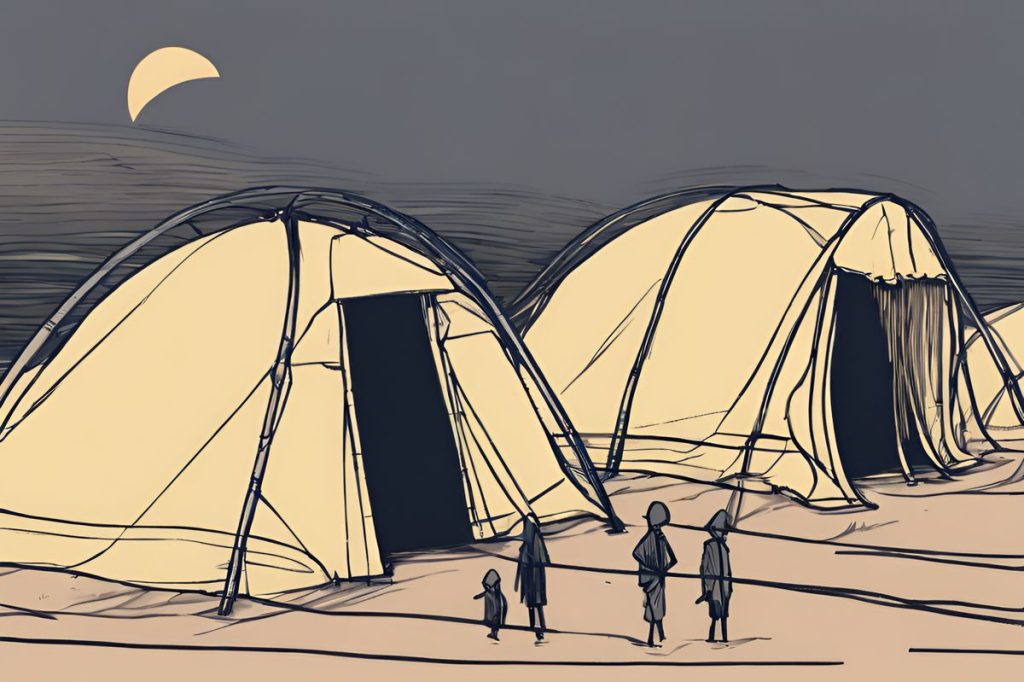As the number of asylum seekers in the Cyprus buffer zone rises to 27, including unaccompanied minors, the migrants face harsh living conditions and a legal impasse in accessing proper asylum procedures, putting the principle of non-refoulement at risk. Government ministries are seeking cooperative solutions to address this escalating humanitarian issue and uphold international and EU laws.
What are the humanitarian concerns in the Cyprus buffer zone?
The Cyprus buffer zone is seeing an increase in migrants, now totaling 27, with recent arrivals including unaccompanied minors. These asylum seekers are facing harsh living conditions and are unable to access proper asylum procedures, despite their rights under international and EU law. The principle of non-refoulement is at risk, and government ministries are seeking cooperative solutions to address this escalating humanitarian issue.
A Rising Number of Asylum Seekers
In recent developments in Cyprus, the population of migrants in the buffer zone has increased to 27, following the recent arrival of 14 more individuals. Katja Johanna Saha, who leads the UNHCR office in Cyprus, reported this situation with growing concern. Just last Friday, the count included 13 people, with unaccompanied minors among them, struggling with the harsh conditions of the buffer zone.
These migrants, seeking refuge and a new start, have approached the local police to request asylum. Their requests, however, were not granted. Saha emphasized the urgency of the matter by reminding that, according to both national and EU legislation, asylum seekers on Cypriot territory should be immediately directed to national asylum procedures. These procedures would allow them to officially register and submit their asylum applications and be placed in designated reception facilities.
Harsh Living Conditions and Legal Impasse
Currently, the migrants find themselves in a precarious position, residing in tents and facing extreme weather conditions. While the UNHCR provides necessities such as food, water, and hygiene items, the living standards are far from decent. Saha pointed out the risks of refoulement, as migrants might feel compelled to return to the northern part of Cyprus where there is no formal asylum system. Such movements could lead to criminal charges for the irregular crossing of the buffer zone and potentially result in deportation orders.
She also stressed that access to proper asylum procedures and decent living conditions are not just crucial but are rights that are safeguarded by international, national, and EU law. The principle of non-refoulement must be upheld, ensuring that no one is sent back to a country where they could face harm.
Government Response and Cooperation
The plight of the migrants in the buffer zone is being managed by four Cypriot ministries: Foreign Affairs, Interior, Defence, and Justice. A government source indicated that the Republic of Cyprus’s stance is guided by the Green Line Regulation, the status of the buffer zone, and the international obligations towards refugees. Cooperation with the peacekeeping force is ongoing to address the needs of the migrants.
Meetings have been held to deliberate on this issue, and more are expected to take place. Such discussions are imperative to finding a sustainable and humane solution to the challenges faced by people caught in this legal and geopolitical quandary.
The Critical Role of Journalists
Journalists like Nikolaos Prakas, who have been reporting on political, criminal, and social issues since 2015, play an essential role in bringing these human stories to the forefront. Their dedication to shedding light on the complexities of migration, asylum laws, and the humanitarian crises helps to ensure that the public remains informed and that the voices of the most vulnerable are heard.
What are the humanitarian concerns in the Cyprus buffer zone?
The Cyprus buffer zone is seeing an increase in migrants, now totaling 27, with recent arrivals including unaccompanied minors. These asylum seekers are facing harsh living conditions and are unable to access proper asylum procedures, despite their rights under international and EU law. The principle of non-refoulement is at risk, and government ministries are seeking cooperative solutions to address this escalating humanitarian issue.
How many asylum seekers are currently in the Cyprus buffer zone?
As of recent developments, there are 27 asylum seekers in the Cyprus buffer zone, including unaccompanied minors. The number has increased with the recent arrival of 14 individuals, bringing the total to 27.
What are the living conditions like for migrants in the buffer zone?
Migrants in the buffer zone are currently residing in tents and facing extreme weather conditions. While the UNHCR provides basic necessities such as food, water, and hygiene items, the living standards are far from decent. There is a risk of refoulement, as migrants might feel compelled to return to the northern part of Cyprus where there is no formal asylum system.
How is the government responding to the humanitarian crisis in the buffer zone?
The government of Cyprus is taking action through four ministries: Foreign Affairs, Interior, Defence, and Justice. They are working to address the needs of the migrants in cooperation with the peacekeeping force. Meetings have been held to discuss potential solutions, guided by international obligations towards refugees and the legal status of the buffer zone.

